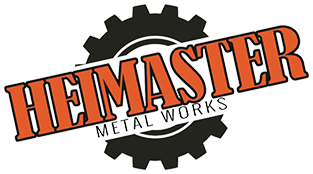Moreover, regular metal maintenance can also save you money in the long run. By preventing serious damage, you can avoid costly repairs or replacements. It's also worth noting that well-maintained metal objects and structures can add value to your property. For instance, a well-maintained metal gate or fence can enhance the curb appeal of your home, potentially increasing its market value.
Common Misconceptions About Metal Care
Many people in Lakeside, CA, and elsewhere, harbor misconceptions about metal care. One common myth is that all metals are the same and require the same care. In reality, different metals have different properties and react differently to various conditions. For instance, some metals are more prone to rusting than others. Another misconception is that metal doesn't need regular maintenance. While it's true that metal is generally durable and long-lasting, it's not immune to wear and tear. Without regular care and maintenance, even the toughest metal can degrade over time.
Identifying Different Types of Metal
Understanding the different types of metal and their properties is the first step towards effective metal maintenance. Some common types of metal include steel, aluminum, copper, and iron. Each of these metals has unique properties. For instance, steel is known for its strength and durability, but it's also prone to rusting. Aluminum is lightweight and resistant to corrosion, but it's not as strong as steel. Copper is highly conductive and has a distinctive color, but it can tarnish over time. Iron is incredibly tough, but it's also susceptible to rusting.
Recognizing these properties can help you tailor your maintenance practices to the specific needs of each metal. For example, since steel and iron are prone to rusting, they may require regular application of protective coatings. On the other hand, aluminum might not need such coatings, but it might require regular cleaning to maintain its shiny appearance.
Understanding How Different Metals React to Various Conditions
Different metals also react differently to various environmental conditions. For instance, some metals can withstand exposure to moisture and humidity better than others. Similarly, some metals can tolerate high temperatures better than others. Understanding these reactions can help you choose the right metal for a particular application and take appropriate measures to protect it from harmful conditions.
For instance, if you live in a coastal area in Lakeside, CA, where the air is often humid and salty, you might want to choose a metal that's resistant to corrosion, like aluminum or stainless steel. Alternatively, you can apply protective coatings to less resistant metals to shield them from the harsh conditions.
Essential Tips for Metal Longevity
Proper Cleaning Techniques for Different Metals
Proper cleaning is an essential part of metal maintenance. However, the cleaning techniques can vary depending on the type of metal. For instance, steel and iron can typically be cleaned with a wire brush or sandpaper to remove rust. Aluminum, on the other hand, can be cleaned with a solution of warm water and mild detergent. Copper can be cleaned with a solution of vinegar and salt to remove tarnish.
It's important to note that harsh cleaning agents or abrasive tools can damage the surface of the metal and should be avoided. Always test a small, inconspicuous area first before applying any cleaning agent or tool to the entire surface. If you're unsure about the proper cleaning techniques for a particular metal, consider seeking professional help.
The Role of Protective Coatings in Metal Durability
Protective coatings play a crucial role in metal durability. They form a barrier on the surface of the metal, protecting it from harmful elements like moisture, oxygen, and chemicals, which can cause rusting and corrosion. There are various types of protective coatings available, including paint, powder coating, and galvanizing. The choice of coating can depend on the type of metal and the conditions it's exposed to.
For instance, paint can be a good choice for steel and iron, as it can protect them from rusting. Powder coating, which involves applying a dry powder to the metal and then heating it to form a hard, protective layer, can be a great option for outdoor metal objects and structures, as it's highly durable and resistant to weathering. Galvanizing, which involves coating the metal with a layer of zinc, can be an excellent choice for metals that are exposed to harsh conditions, as it offers superior corrosion resistance.
Importance of Regular Inspection and Maintenance
Regular inspection and maintenance are key to metal longevity. By inspecting your metal objects and structures regularly, you can spot early signs of damage, like rust spots or cracks, and take immediate action to prevent further deterioration. Regular maintenance, including cleaning and applying protective coatings, can keep your metal in top condition and prolong its lifespan.
Overcoming Common Metal Maintenance Challenges
Dealing with Rust and Corrosion: Prevention and Treatment
Rust and corrosion are common challenges in metal maintenance. They occur when the metal reacts with oxygen and moisture in the air, leading to the formation of rust or corrosion on the surface. This not only affects the appearance of the metal but also weakens its structure, potentially leading to serious damage. The good news is that rust and corrosion can be prevented and treated.
Prevention involves protecting the metal from exposure to oxygen and moisture. This can be achieved through regular cleaning and the application of protective coatings. Treatment involves removing the rust or corrosion and then applying a protective coating to prevent further damage.
Addressing Wear and Tear: Strategies for Prolonging Metal Life
Wear and tear is another common challenge in metal maintenance. It can result from regular use, exposure to harsh conditions, or lack of maintenance. Over time, wear and tear can lead to issues like scratches, dents, and cracks, which can affect the appearance and functionality of the metal. However, with the right strategies, you can address wear and tear and prolong the life of your metal.
One effective strategy is to apply protective coatings, which can shield the metal from physical damage and harsh conditions. Regular cleaning can also help, as it removes dirt and debris that can cause scratches. Regular inspection and maintenance can also play a crucial role, as they allow you to spot and address signs of wear and tear early on.
Advanced Techniques for Metal Durability
Utilizing Modern Technologies for Metal Preservation
Modern technologies offer advanced techniques for metal preservation. These include techniques like laser cleaning, which uses laser light to remove dirt and rust without damaging the surface of the metal, and nanocoatings, which use nanotechnology to create ultra-thin, highly durable protective layers on the metal. These advanced techniques can provide superior protection and longevity for your metal, making them a worthwhile investment.
Exploring Professional Metal Maintenance Services
Professional metal maintenance services can be a great option if you lack the time, skills, or resources to maintain your metal objects and structures yourself. Professionals have the knowledge and experience to handle different types of metal and various maintenance tasks, ensuring that your metal is properly cared for. They also have access to advanced tools and techniques, which can provide superior results.
Understanding the nuances of metal types and their unique vulnerabilities is pivotal in sustaining their longevity. From steel's strength tempered by susceptibility to rust to copper's conductivity tarnished over time, each metal demands tailored care. Recognizing environmental reactions and employing preventive measures, such as protective coatings and proper cleaning, stand as paramount strategies. Regular inspection and maintenance serve as guardians against wear, rust, and corrosion, preserving metal integrity. Moreover, embracing modern technologies and professional maintenance services offers advanced solutions, ensuring sustained metal durability and safeguarding against the inexorable march of time.

